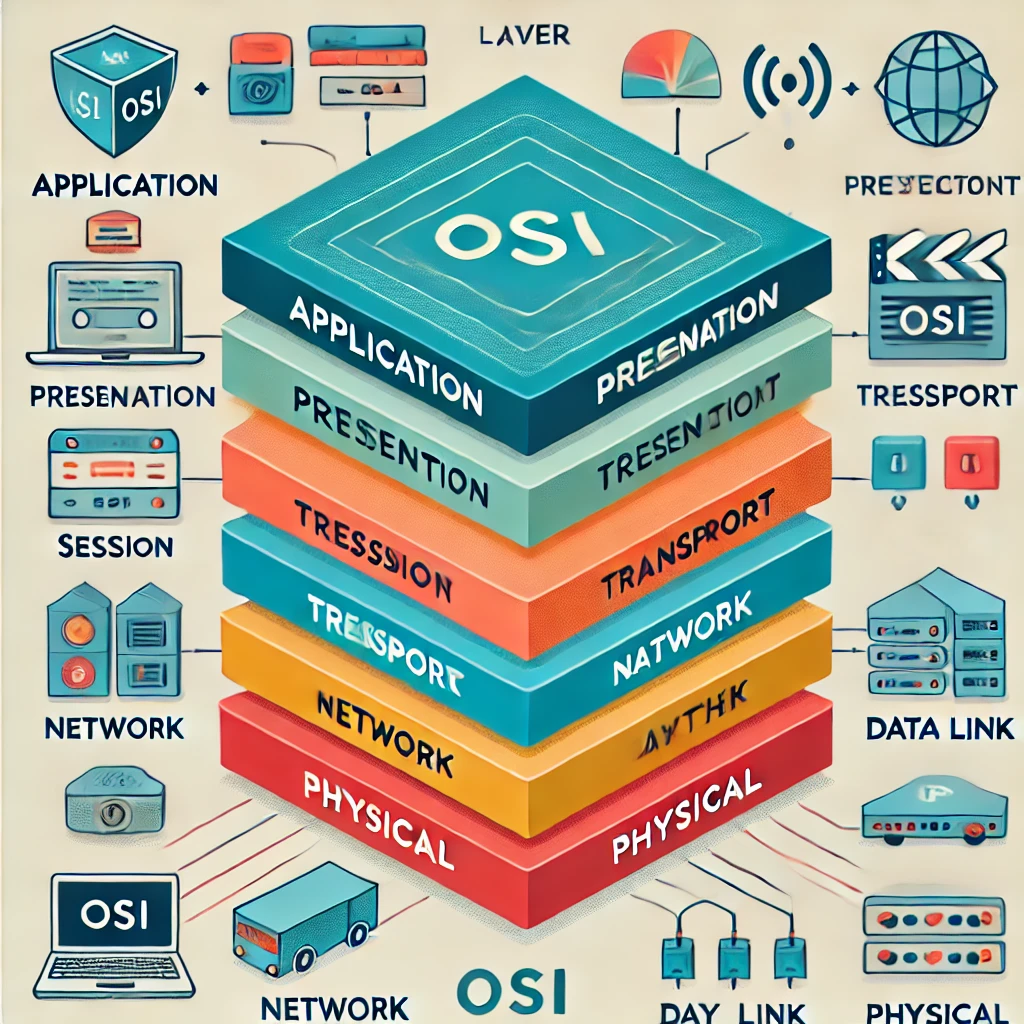Understanding the OSI Model and Basic Networking Concepts
 Md Saif Zaman
Md Saif Zaman
In today's interconnected world, understanding how networks function is crucial for anyone working in IT or computer science. At the heart of networking lies the OSI (Open Systems Interconnection) model, a conceptual framework that standardizes the functions of a telecommunication or computing system without regard to its underlying internal structure and technology.
The OSI Model: A Layered Approach
The OSI model consists of seven layers, each with specific responsibilities:
Physical Layer: This is the foundation of the network, dealing with the physical transmission of data. It defines the electrical and physical specifications for devices.
Data Link Layer: This layer is responsible for the reliable transfer of data between two directly connected nodes. It detects and possibly corrects errors that may occur in the physical layer.
Network Layer: The network layer provides the functional and procedural means of transferring variable length data sequences from a source to a destination via one or more networks.
Transport Layer: This layer provides end-to-end communication services for applications. It's responsible for reliable data transfer, ensuring that data arrives in the correct order without errors.
Session Layer: The session layer establishes, manages, and terminates connections between applications.
Presentation Layer: This layer is responsible for the formatting and encryption of data. It transforms data into the form that the application layer can accept.
Application Layer: This is the layer that's closest to the end user. It provides network services directly to applications.
TCP/IP: The Internet Protocol Suite
While the OSI model is conceptual, the TCP/IP model is the practical implementation that powers the internet. It consists of four layers that roughly correspond to the OSI model:
Network Access Layer (similar to Physical and Data Link layers in OSI)
Internet Layer (similar to Network layer in OSI)
Transport Layer (similar to Transport layer in OSI)
Application Layer (combines Session, Presentation, and Application layers of OSI)
TCP vs UDP: Understanding Transport Layer Protocols
Two primary protocols operate at the transport layer: TCP (Transmission Control Protocol) and UDP (User Datagram Protocol).
TCP (Transmission Control Protocol)
TCP is a connection-oriented protocol that ensures reliable, ordered, and error-checked delivery of data. It's like sending a certified letter through the postal service - you get confirmation that it was delivered and in what order.
Key features of TCP:
Establishes a connection before data transfer
Guarantees delivery of data packets
Implements flow control and congestion control
Ensures correct ordering of data packets
UDP (User Datagram Protocol)
UDP, on the other hand, is a connectionless protocol that provides a simple, unreliable datagram service. It's like shouting a message across a room - it might get there, but there's no guarantee.
Key features of UDP:
No connection establishment required
Does not guarantee delivery or ordering of data packets
Faster than TCP due to less overhead
No flow control or congestion control
Practical Applications
Understanding these concepts is crucial for various networking tasks:
Troubleshooting: When a network issue arises, understanding which layer of the OSI model is affected can greatly speed up the troubleshooting process.
Network Design: Knowledge of the OSI model helps in designing robust and efficient network architectures.
Protocol Selection: Understanding the differences between TCP and UDP helps in selecting the right protocol for different applications. For example, video streaming often uses UDP for its speed, while file transfers typically use TCP for its reliability.
Security: Many network security measures are implemented at specific layers of the OSI model. Understanding these layers helps in implementing comprehensive security strategies.
In conclusion, while the world of networking can seem complex, breaking it down into layers as per the OSI model makes it more manageable. Whether you're designing a new network application, troubleshooting connectivity issues, or just trying to understand how the internet works, a solid grasp of these fundamental concepts is invaluable.
Subscribe to my newsletter
Read articles from Md Saif Zaman directly inside your inbox. Subscribe to the newsletter, and don't miss out.
Written by
